#tignon law
Explore tagged Tumblr posts
Text
Dr. Anna Julia Cooper was right! Bullies are cowards! Therefore, it's not immature to see racism as immature bullying!
Really think about it. Bullying often has tactics and attacks that destroy the human psyche as well as someone's self-esteem. It's on purpose. In my eyes, white people try to stroke their own egos by attacking the psyche of black people. Notice how anytime a black person gets any attention or black people end up making their own spaces due to lack of exposure or any representation, other races often lose their minds and become heavily offended by these moves... as if they don't have their own spaces to be vocal about... anything?
Like why do you CARE? Why DO they care? Why do they care enough to ruin your psyche? They can't even be proud of their own race without tearing down blackness. See how juvenile it is for blackness to make them uncomfortable.
Like let's bring in the tignon laws, the laws that forced black women to... cover their hair- okay lol. Very discriminatory law! But the juvenile reason for that law to take place was because white men, with their fetishizing selves, notice black women's hair way too easily and the white women weren't having that. Does that NOT sound juvenile?
Many people will state that white women were simply jealous of black women's hair and the attention they received for it, so their immature selves crafted a law that watered down black women's beauty. OVER JEALOUSY! I shouldn't have to ask anyone to think critically on how asinine this is! And black women STILL backslide when it comes to their own self-esteem because they hate themselves as well as their hair... when people care too much about it in the first place. And fetishization be damned, because our hair as well as our features, skin tone, and all, can be seen as beautiful regardless of how screwed up everyone's perception of us is.
And you wonder why I just LOOK down on racism.
Please learn to love yourselves. Feel SOME pride in many these idiots uncomfortable. If they thought critically, they'd go against tearing down black women and their blackness, but we live in an immature world where someone's ego has to be stroked through someone's misery... as if they even matter.
1 note
·
View note
Text
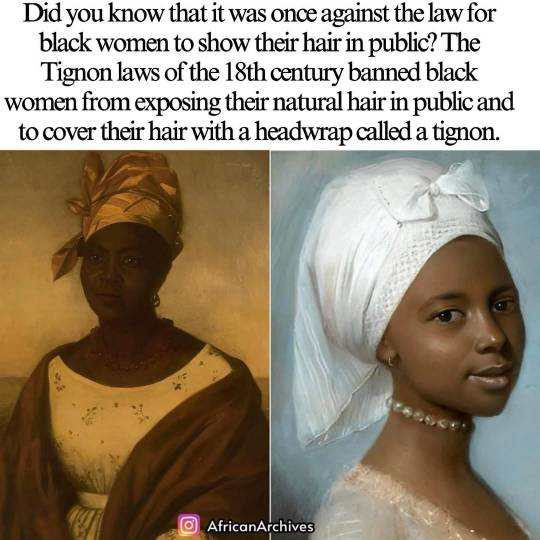
The Tignon laws of the 18th century were laws that banned black women from exposing their natural hair in public.
Their hairdos was obscuring the status of the white women and this threatened the social stability. The law would control colored women “who dressed too elegantly..”
Resembling today’s West African Gele, a tignon is a type of head-covering. It is a large piece of material wrapped or tied around the head to form a kind of turban concealing the hair.
Tignons were worn by free and slave Creole women of African descent in Louisiana from 1786. Historically, their prevalence was as a result of sumptuary laws passed in 1786 under Governor Esteban Rodriguez Miró.
These prescribed and enforced appropriate public dress styles for women of color in a white-dominated society. Hence, they were made as a way of regulating the appearance of black women in the U.S.
During the period, when black enslavement in America was at its peak, and places like New Orleans was unique in its high population of gens de couleur libres (free people of color), black women’s beauty and features often attracted white men who approached them as suitors.
This enraged white women who perceived them as competitors. Evidently, African women competed openly with white women through elegant dressing, including adorning their textured hair with gems, beads, and other accents that made them stand out from white women and possessing great beauty.
To take care of this perceived menace, series of sumptuary laws birthing the Tignon Law were put in place in order to stop white men from pursuing and engaging in affairs with women of colour, “while also being a class signifier,”
#black history#black women#black hair#naturalhair#natural hair#Tignon laws#its not just hair#black people#american history#headwraps#headwear#racism#oppression#discrimination#antiblackness#social issues#teamnatural#natural hair care#naturalhairhow101#history#african history#truth#perspective
591 notes
·
View notes
Text
since this is such an underresearched topic and i feel like bits of historical evidence could come from a very very wide breadth of sources, i’m reaching out to all the pdf lovers on tumblr: who here has any (reputable) sources that might mention how black people (socially, culturally, politically, etc) affected western fashion PRIOR to the jazz age???
#i will definitely be touching in the tignon laws as well as sarah bartman + the victorian bustle eras#but i’m just looking for more sources so i can build a concrete argument#winsome’s wailings#black history
31 notes
·
View notes
Note
Hi!
Firstly, thank you for everything you're doing, and all the resources. They're so interesting and useful. And I really appreciated the favourite Black character showcase, and not just so I could share my favourite characters with everyone lol.
Secondly, I have a question about my own worldbuilding. It's a fantasy, and the royal family of one of the kingdoms is Black. At the moment I have a tentative idea to have it as part of their culture for the king and queen specifically to cover part of their hair, to symbolise that they're ready to go and help the kingdom at a moment's notice, even at night. Even when they're woken up from sleep. My idea is that the king's hair kind of looks like a cross between these two photos (first for his hairstyle, second for his headwrap style):


It's only the ruling monarch/s that do this – their direct heir will at a certain age start wearing translucent partial head coverings on special occasions, but nothing opaque or at all times in public until they're the monarch. None of the other royals do. One of the main characters in my story is the second eldest princess, who's about 18-ish and doesn't cover her hair, and nor do either of her younger sisters (one of whom is in the story quite a lot) (the other main character is the white queen of another kingdom, about the same age, and they don't cover their hair there, if that's any useful context – there's a number of Black characters too who don't cover their hair).
I know there used to be laws forcing the covering of Black people's hair in some places, and with the discrimination surrounding Black hair too, I'm wondering whether it would be racist or anything inappropriate to have something like this? Or if I'm overthinking it?
(I'd also appreciate it if you could just give me a yes/hell no on the hairstyle itself too if you have a chance.)
(also I'm either terrible at searching or preaching to the choir here but it's so hard to find images of black men in headwraps on duckduckgo, seriously. And sorry for the long ask! I appreciate it if you answer this and dw if you don't want to/can't.)
You chose two fine ass men 😭 Oooh I love a man in a turban. Gorgeous. I love both styles. And head coverings and scarves are also a positive part of Black beauty cultures internationally! Nigerian women will wear the finest of head wraps for special events, I love seeing the styles. So ofc it wouldn't be an issue.
It's not that hair is being covered that was what made the Tignon laws (what you're talking about) racist, it was the reason why they were being forced to cover their hair. If that is not what you're depicting (without intent to show discrimination) then you're fine. You seem to be doing it as a sign of royalty and devotion to one's kingdom. That sounds honorable to me.
43 notes
·
View notes
Text
Ecto-Implosion Time! (3/3)
Take The Stars And Show Them How To Glow by @ikiracake
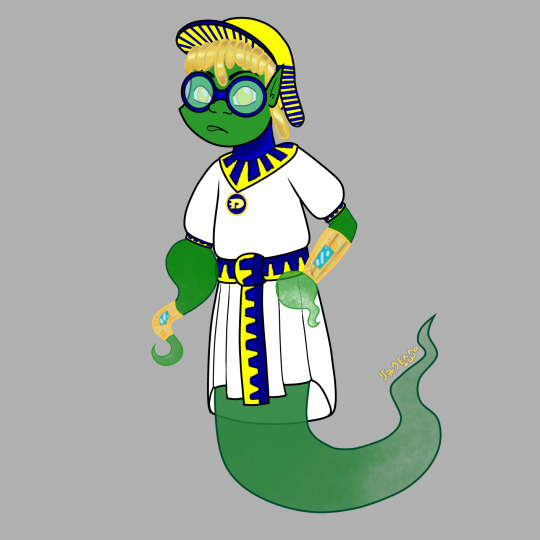
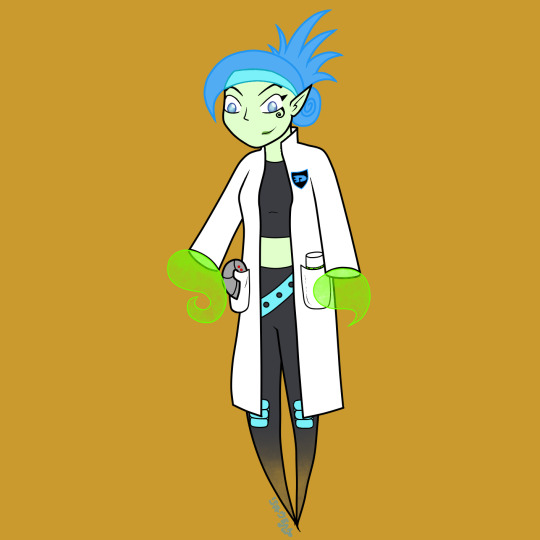
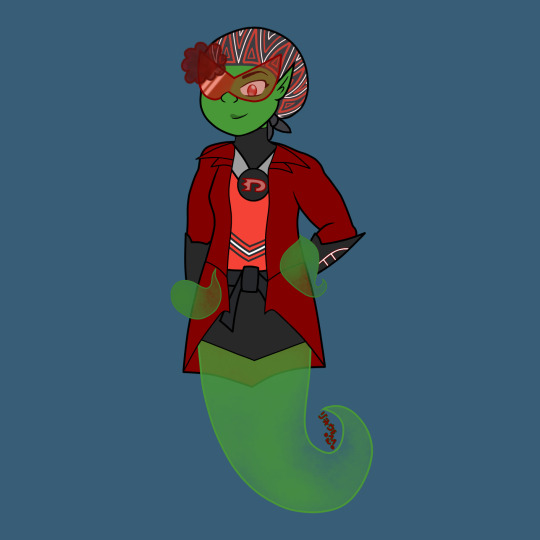
The only thing that came to my mind to comment this post was this meme (sorry not sorry 🤣):

At long last, everyone at full power!!
...or are they?
Spoilers/Trivia under the cut!
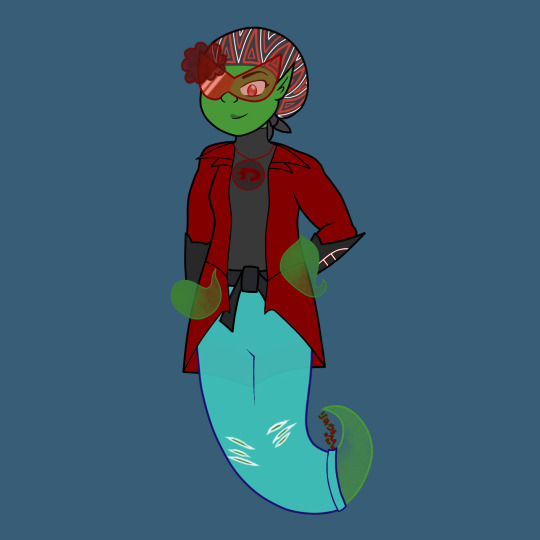
At long last, Val my gal at Full Powaaaaaa!
(๑˃ᴗ˂)ﻭ
The initial reasoning for Val taking so long to reach her full potential came from a brainstorming sesh on the EI server with the other artists, because I had no Idea how to design the Final Form.
Everyone had their interests and quirks fitted in their outfits and designs, but Val was just in an alt version of her Huntress suit! ( ≧Д≦)
Due to poor show planning choices, canon Valerie Gray has no interests, hobby or little details to make her a well-rounded character other than a martial art expert who could kick your ass into the next week and used to be a snob/A-Lister.
Yes, that made her a blank slate to paint in any way I desired, but it was completely unfair to her!
But then @faerynova gave me the nudge I needed to think deeper into her character:
consider: valerie herself doesn't know because she painted her entire identity around being an a-lister and fitting in and then around revenge and by god does she need to sit down and figure out what she enjoys and how to enjoy things for herself
That made me think back of a past fic of mine, where Val's Grandma was from New Orleans (thus the jacket and the tignon headwrap).
AND THEN!
Valerie Gray is a Pro with her Hoverboard. It wouldn't be too much of a leap for her to start skateboarding for a challenge, since the laws of physics are more pressing with "analogic" tools instead of "cheating" with ghost-related ones.
So, Skater Girl Val! 🙌
As for Tucker, like I said in the previous post, this was his original-do, because my man deserves his past power-ups to be recognized!
(๑•̀ㅂ•́)و✧
And last, but not least, Jazz!
She's a teenager, she deserves to act and look like it!
Thus Ember-style makover, still retaining her science roots and interest, but not chained by them.
(◡̀_◡́)
I think that this is all, for now.
This @ecto-implosion was a blast, I had so much fun working with Ikira (thank you again for choosing me! 😊) and I cannot wait to see what next year has in store!
Happy Imploding Everyone!
(ノΦωΦ)ノ*.✧
#the dragon draws#danny phantom#ectoimplosion#ectoimplosion24#tucker foley#jazz fenton#valerie gray#sam manson#wes weston#danny fenton#dani phantom#original ghost villain#magical girl au#full power#this event is so fun#little baby man#maybe one day I'll make the villain as well#but now I'm eepy#so maybe next time
15 notes
·
View notes
Photo

Cécile wears a tignon on the cover of Troubles for Cécile, and I wish they’d included one in her collection, even though I guess they were more typically worn by adult women instead of little girls. Tignons are fascinating. They started out as a fairly straightforward way for enslaved women to protect their hair and keep it out of their way as they worked. Soon, laws were enacted declaring that enslaved women were required to cover their heads with tignons as a sign of their lower status. The women who wore them however refused to be demeaned, and turned their tignons into huge, elaborate, and colorful headpieces that they wore with pride.

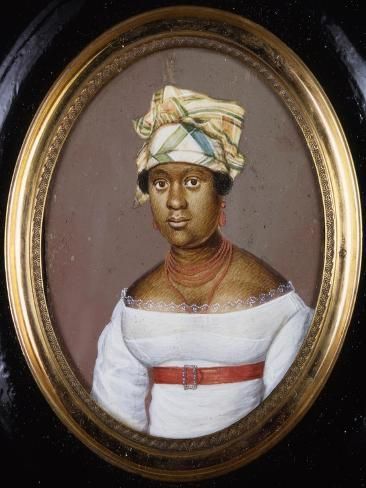
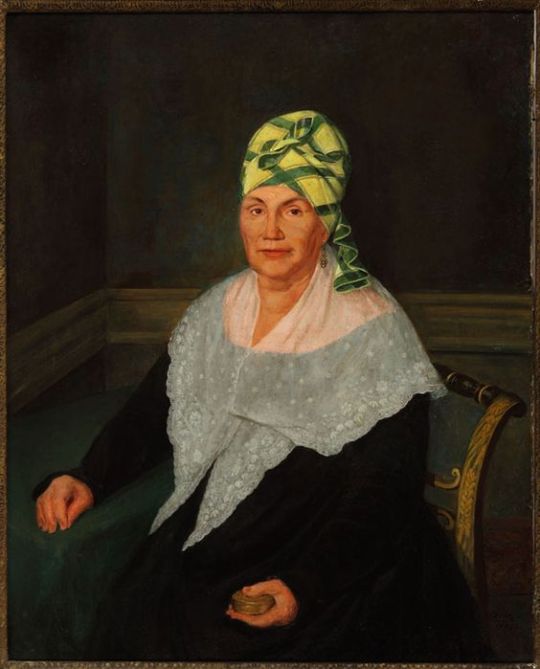

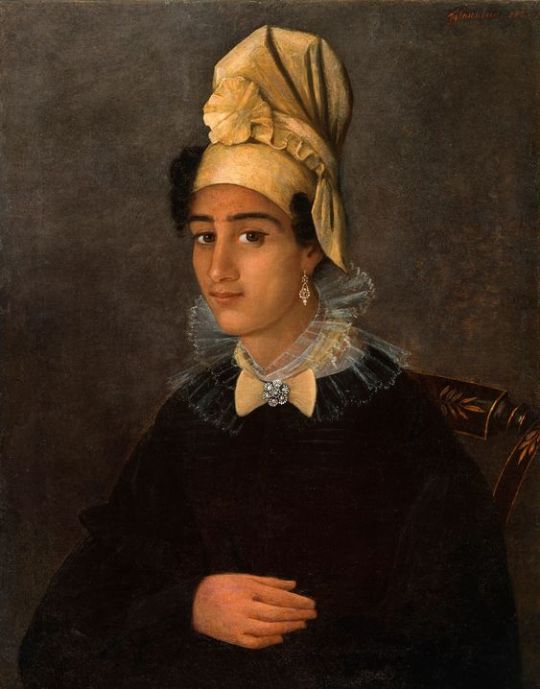
Even the voodoo queen HERSELF, Marie Leveau rocked a tignon:

(okay so that painting is actually most likely NOT an actual portrait of Mme Leveau, but she still wore a tignon!)
188 notes
·
View notes
Text

the 4 L's jamari taylor
according to the artist statement this references the tignon law of 1700s new orleans requiring black women to cover their hair, and the pride that modern black women feel in their hair and their self-expression
11 notes
·
View notes
Text
tignon law of 1786
in louisiana, during the 18th century, a law was passed in order to outcast and oppress black women of color by forcing them to cover their hair with scarves. this was due to the fact that white people (especially women according to online sources) were jealous of their hair because of how eye-catching it was, so it led to african american women’s hair getting regulated. this led to women becoming creative and finding ways to make the scarves beautiful and still be following the law, which didn’t end until 1803. the tignon law is just another example of poc getting oppressed because of an unfair and biased legal system.
#passion project#high school#usa#history#lawblr#equal rights#explore#lawyer#discover#law#politics#women#african american#black women#blacklivesmatter#african beauty#african women#african american history#african american culture#african american women#black culture#women of color#african american spirituality#laws#lawsuit#law school#lawsuits#union square#university#united states
40 notes
·
View notes
Text
''Black History: The Tignon Laws and Their Impact on Black Women'' #blac...
youtube
4 notes
·
View notes
Text
“It’s important, therefore, to know who the real enemy is, and to know the function, the very serious function of racism, which is distraction. It keeps you from doing your work. It keeps you explaining over and over again, your reason for being. Somebody says you have no language and so you spend 20 years proving that you do. Somebody says your head isn’t shaped properly so you have scientists working on the fact that it is. Somebody says that you have no art so you dredge that up. Somebody says that you have no kingdoms and so you dredge that up. None of that is necessary. There will always be one more thing.”— Toni Morrison at Portland State, May 30, 1975
Mock us for having refined hair. We create ways to straighten it. Now we’re “trying to be white”. Proudly wear our hair naturally. Criticizes our hair texture and creates laws to restrict us (Tignon Laws and present day discriminatory work practices).
Ridicule us for not knowing our lineage. Attempts to research African lineage. Accuses us for meddling in cultures that we aren’t a part of. Begins to discover our genealogical, ancestral American lineage. Teases us for releasing the energy to finding African ancestry and correlating the effort to wanting to Europeanize ourselves.
We keep using BAVE (Black American Vernacular English). Condemns us for speaking “broken English”. Options code-switching. Told we’re “trying to be white” and proper so we’re bougie. Sneers at us for assuming we have no [other] language(s) but English. We find out we do have several that our ancestors created such as Kouri Vini (Louisiana Creole) and Tutnese. Jeers at how those were created during slavery.
Racism comes at us from white people and antiBlack American antagonism (racism’s cousin) is a practice everyone (Black people who aren’t Black American and people of color) uses against us.
Black Americans, please keep preserving our history, lineage and culture and always keep the spark to keep unearthing all our ancestral treasures! Share what you discover and learn because that becomes past, present and future history.
And do it unapologetically!
6 notes
·
View notes
Photo


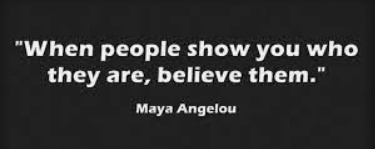

youtube
NYC Attorney SNATCHED Wig Off Black Woman's Head And Got FIRED | Roland Martin

youtube

WE AT BP DID A COUPLE OF POST ON BLACK HAIR, THE TIGNON LAWS AND THE CROWN ACT.
*BP* BLACK HAIR AND CROWN ACT UNDER DID YOU KNOW (PG 5)
*BP* THE TIGNON LAWS UNDER DID YOU KNOW (PAGE 6)
BLACK PARAPHERNALIA DISCLAIMER - PLEASE READ
7 notes
·
View notes
Text
I LOVE my 4C hair! I used to hate it because people would discriminate it and those WITH IT... BUT... I love it for me! It honestly looks very cute! I really like 4C hair in it's undefined state! I love it so much that I don't want to do anything to it. I just wanna wear it as is and take it in everyday.
With the tignon laws coming in all because immature white women were jealous of black women and their hair, I love my hair because I'm black and it's on me. I end up having more reasons to love it! I actually love my hair BECAUSE IT UPSETS PEOPLE! I get a power trip over it!
I end up loving the 70s era for black people because of it, as many of them wore afros. I always thought Michael Jackson looked better with an afro than any other hairstyle because I love my own hair.
I even love the way 4C hair shrinks up. It stays out of the way so I don't always have to play with it. I love how it absorbs moisture, too, 'cause imagine if it can dry up fast so you don't have to use a blow dryer! Plus, it's not a complete negative to get this hair type wet since it'll benefit from a lot of moisture anyways, so water is perfect for it! I don't have to worry about any water ruining any styles because I won't even STYLE it!
And then all the DECORATE PIECES you can put into it! I love putting ribbons in my hair! But I also want to put roses in it to look like a walking rose bush! I LOVE roses, too! I'd stuff so much stuff in my hair and do nothing else... I'd be a walking bush of random stuff lol.
4C hair is also the most versatile hair if you care about styling it. You can still straighten like the other hair types and even style it to mimic all other styles since this is the tightest hair coil pattern. BUT. I prefer doing nothing to it even with how versatile it is.
Anyways... I adore 4C hair and I don't even want any other hair type. They're all beautiful... but I'll always love what God gave me. Even if everyone doesn't think it's the best hair type, I think it is, and I LOVE 4C hair the best! Thank you, God!
#4c hair#natural hair#type 4 hair#afro#afro hair#fro#black feminism#black femininity#black women matter#🩷.txt
0 notes
Text
only i would be dumb enough to go on a history research trip to new orleans with literally $35 in my bank account
#but my plane tickets have already been purchased so!! if you wanna send funds the tip button is in my bio 😎#i’m going down there to research the tignon laws for my senior thesis#which is on how black people affected western fashion hostorically#winsome’s wailings#historical fashion
16 notes
·
View notes
Text

Tignon Lawless, 2018
Medium: photo printed on silk headwrap Subject: My mother after she cut her hair Reference: Tignon Law of 1786 · In 1786 Tignon Law was set into place by Spanish Colonial Governor, Don Esteban Miró in Louisiana. This law forced women of African descent to conceal their hair with headwraps or "tignons". Black hair was viewed as threatening to white women by attracting white male suitors. Despite the blatant suppression of identity, women of color turned tignons into a cultural fashion statement as a form of rebellion.
Articles cited:
"The Tignon Law of 1786" by Kimberly Jenkins "When Black Women Were Required By Law to Cover Their Hair" by Jameelah Nasheed "The Tignon Laws Set The Precedent For The Appropriation And Misconceptions Around Black Hair" by Samantha Callender
#fallen cargo#fallen cargo archive#photography#film photography#black history#black archives#art#graphic design
0 notes
Text
1 note
·
View note
Text
Hey Bre'Anna!
Seeing the clip in class was more of a refresher for me as I've seen Spike Lee's "School Daze" in passing growing up. As you stated, one of the biggest factors related to hair discrimination is indeed rooted in colorism and the forced push for Eurocentric beauty standards. For example, during slavery in cities like New Orleans where Tignon Laws were enforced, Creole women of color were mandated to wear headwraps that ultimately segregated them from white women. Reflecting on the hair conversation we had in class, it was interesting to see how many of us as Black women have received hateful comments about our hair or how many of us have permed our hair to achieve a certain "look." The appeal towards the male gaze also plays a role in the way in which Black women are perceived based upon hair. As we progress forward, we as Black women have learned to embrace different textures and types through celebration and legislation like the Crown Act.
~ Velvet Tapp

1 note
·
View note